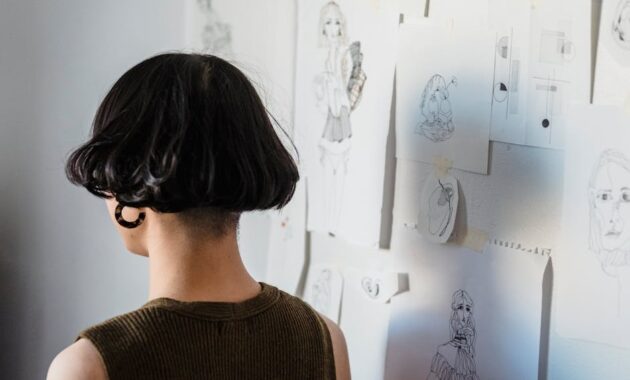The Ultimate Guide to Female Character Hairstyles: A Stylist’s Perspective
Choosing the right hairstyle for a female character is crucial; it’s a powerful tool that can instantly communicate personality, social status, and even plot points. From the sleek bob of a career-driven executive to the flowing locks of a rebellious princess, female character hairstyles play a vital role in storytelling. This comprehensive guide delves into the nuances of hair design in character creation, offering insights for writers, artists, and anyone interested in the art of visual storytelling.
Understanding the Significance of Hairstyles
Hairstyles are more than just aesthetic choices; they’re integral to character development. They reflect a character’s personality, background, and even their emotional state. A messy bun might suggest a carefree, bohemian spirit, while a meticulously styled updo could indicate someone with a strong sense of order and control. Consider the societal context: a particular hairstyle might be associated with a specific era, social class, or even a rebellious movement. The choices made about female character hairstyles are deeply interwoven with the narrative.
Historical Influences on Female Character Hairstyles
Historical periods significantly influence hairstyles. Examining past trends can provide inspiration and context. The elaborate, towering hairstyles of the 18th century contrasted sharply with the simpler, shorter styles of the 1920s flapper era. Understanding these historical shifts in female character hairstyles allows for greater authenticity and depth in character portrayal. [See also: Historical Hair Trends Across Cultures]
Victorian Era Hairstyles
The Victorian era, known for its ornate and elaborate fashion, featured complex hairstyles for women. These often involved elaborate braids, curls, and the use of hairpieces and accessories to create voluminous and impressive styles. These hairstyles reflected the social norms and expectations of the time, with elaborate styles signaling wealth and status.
The Roaring Twenties
The 1920s saw a dramatic shift in female character hairstyles. The bob, a short, choppy cut, became a symbol of female liberation and modernity. This style was a stark departure from the longer, more elaborate styles of the previous era and reflected the changing social landscape.
The Psychology of Female Character Hairstyles
The psychological implications of hairstyles are profound. A character’s hair can be a visual representation of their inner turmoil or a carefully constructed facade. A character constantly touching or adjusting their hair might be displaying anxiety or insecurity. A drastic change in hairstyle could signal a significant life change or a break from the past. Paying attention to these subtle cues enhances the depth and believability of your characters.
Hairstyles and Social Status
In many fictional worlds, hairstyles can be indicative of social class and status. Elaborate, intricately styled hair might denote wealth and privilege, while simpler, more practical styles might suggest a working-class background. This detail adds another layer of realism to character design. Consider how female character hairstyles can reflect the social hierarchy within your narrative.
Choosing the Right Hairstyle for Your Character
Selecting the appropriate hairstyle involves careful consideration of various factors. The character’s personality, age, occupation, and social status all play a role. Consider the setting and the overall tone of your story. A whimsical, fantasy setting might allow for more extravagant hairstyles, while a realistic, contemporary setting would require more grounded choices. The hairstyle should complement and enhance the character’s overall appearance and narrative arc.
Different Hairstyles for Different Personalities
- The Classic Bob: Often associated with sophistication, confidence, and independence.
- Long, Flowing Hair: Can represent femininity, freedom, and a connection to nature.
- Short, Edgy Hairstyle: Might suggest rebellion, unconventionality, and a bold personality.
- Braids and Updos: Can communicate elegance, grace, and a sense of tradition.
- Messy Bun: Often portrays a relaxed, casual, and possibly slightly rebellious personality.
The Role of Hair Color
Hair color also contributes to character portrayal. Consider how different colors might convey different personalities and emotions. A vibrant red might suggest passion and boldness, while a subdued brown might indicate calmness and reliability. The choice of hair color, in conjunction with the style, significantly impacts the overall impression of a character’s female character hairstyles.
Tools and Resources for Inspiration
Numerous resources are available to inspire your creativity when designing female character hairstyles. Online image databases, Pinterest boards, and even historical fashion archives can offer valuable inspiration. Studying the work of professional stylists and character designers can also be immensely helpful. [See also: Top 10 Resources for Character Design Inspiration]
Conclusion: Mastering the Art of Female Character Hairstyles
In conclusion, mastering the art of female character hairstyles requires a keen eye for detail and a deep understanding of the complexities of visual storytelling. By considering the historical context, psychological implications, and social implications of hairstyles, creators can craft characters that are both visually appealing and deeply compelling. The right hairstyle can elevate a character from ordinary to unforgettable, transforming them into an iconic figure in your narrative.
Beyond the Basics: Exploring Advanced Techniques in Female Character Hairstyles
Beyond the basic considerations, there are advanced techniques to further enhance the depth and impact of female character hairstyles. This includes exploring the use of accessories like headbands, hats, and jewelry to complement the style and add visual interest. Different textures and styling techniques, such as curls, waves, and straight hair, can also be used to create a wide range of looks that capture a character’s unique essence. Additionally, paying close attention to the interaction between a character’s hairstyle and clothing style can create a unified and visually cohesive look.


